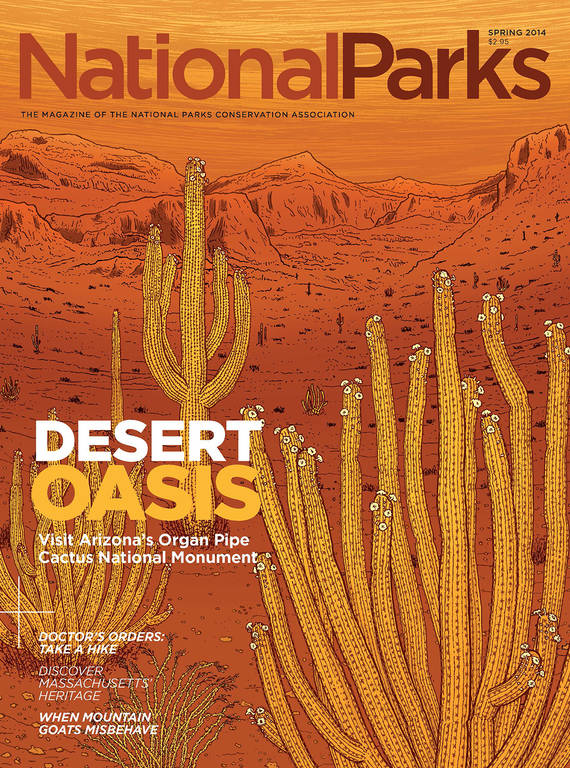Spring 2014
Merrily Go ‘Round
Past and present collide at Glen Echo Park in Maryland, once the D.C. region’s premier amusement park.
Stand below the glimmering art deco entrance sign or watch the original, 1921 carousel spin and you can almost imagine Glen Echo Park in its amusement park heyday. The click click click of the wooden rollercoaster. The summertime throngs sunning themselves at the enormous Crystal Pool. The thump of the bumper cars. The trolley cars clanging to a stop below the giant neon lights.
From 1898, when the first ride opened, through most of the 1960s, Glen Echo was the epitome of a small-town amusement park—a warm-weather escape just a short distance from Washington, D.C. Trolleys departing from Georgetown could reach this leafy enclave in 45 minutes, and through wars and the Depression, the crowds returned season after season. Later, when the amusement park’s popularity dimmed, Glen Echo was reinvented; today the site remains a thriving arts and culture center.
A GIANT STAGE
But the park’s history starts long before that—and it contains some darker chapters, too. The story opens in 1888 with the arrival of two brothers, Edward and Edwin Baltzley, in what was then purely rural Maryland. Edwin had made a fortune inventing variations on a seemingly simple kitchen device, the eggbeater. Keen to invest in real estate, the brothers bought 500 acres of land along the Potomac River.
The region was expanding, the middle class was seeking ways to escape the crush of the city, and the brothers envisioned a suburban paradise. It was the age of Chautauqua assemblies—educational religious gatherings that had evolved into dozens of camp-like summer arts and culture retreats scattered across the country. Hoping to capitalize on the movement and lure potential suburbanites, the brothers built a Chautauqua site complete with an 8,000-seat amphitheater and a home for American Red Cross founder Clara Barton, now a national park unit separate from Glen Echo.
The 1891 inaugural season was a success, but things quickly went downhill from there. Several factors, including outsize costs, bad weather, and false rumors of a malaria outbreak, doomed the venture. In 1903, the brothers admitted defeat and sold the company.
And so Glen Echo became an amusement park. The trolley company, which had been transporting visitors to the site since 1897, bought Glen Echo in 1911 and transformed it into a full-fledged amusement park that boomed for decades. Each year brought new attractions, from the grand carousel to the bumper car pavilion. The largest roller coaster, the Coaster Dips, gradually expanded until it stretched across the park. The Crystal Pool, with grandstands, underwater lights, and room for 3,000 swimmers, opened in 1931, and soon after, so did the mission-style Spanish Ballroom, a 7,500-square-foot dance hall. Lit up at night, the park’s huge, bright signs and sweeping roller coasters were visible from every direction, beckoning visitors.
But not everyone was invited. “If you were black, you could sit on the trolley car, smell the popcorn, hear the screams from the roller coaster, and see the lights, but you were not allowed to come in,” says Vanessa Smiley, a park ranger at Glen Echo.
To protest the policy, members of the Non-Violent Action Group—a civil rights organization run by Howard University students—staged a sit-in. On June 30, 1960, a group of five African-American students boarded the carousel. They were arrested, but students and neighbors returned, and protests continued all summer.
The negative attention, combined with the threat of federal intervention, convinced management to capitulate, and the next season the park was opened to everyone. It was just a tiny step in the civil rights movement, but several participants, including the late Gwendolyn Britt, who later became a Maryland state senator, said Glen Echo was an important training ground for them.
“I absolutely did feel fear,” Britt said in an interview for Glen Echo’s oral history project. “But when you have the compulsion that this is something you must do, that overrides fear and anxiety and your heart takes over.”
But by the time Glen Echo was integrated, the amusement park was in decline. Americans’ leisure habits were shifting and massive theme parks were opening, Smiley says. Meanwhile, the newly constructed Capital Beltway had bypassed Glen Echo, and the trolley stopped running there.
In 1968, the amusement park closed for good. The owners started selling off or demolishing rides, and two years later, the National Park Service took over, remaking Glen Echo into a modern-day Chautauqua.

National Parks
You can read this and other stories about history, nature, culture, art, conservation, travel, science and more in National Parks magazine. Your tax-deductible membership donation of $25 or more entitles…
See more ›Today, the 9.5-acre park is jointly administered by the agency and the Glen Echo Park Partnership for Arts and Culture, a nonprofit established in 2002. Visitors can catch shows, take classes, and dance in the park, which is home to 14 resident artists and arts organizations from The Puppet Co. to the Washington Conservatory of Music. Smiley likes to point out that the carefully restored, sprawling Spanish Ballroom, where hundreds still turn out for big events, may be the only spot in a national park site with a disco ball.
A number of other original gems dot the grounds. The towering Crystal Pool sign remains, and so does the 1891 Chautauqua tower, a stone building that once served as the entrance and administrative offices.
Then there’s the historic Dentzel carousel, which sits in the middle of the park like a bejeweled crown. In 1970, local residents rallied to save the carousel, raising enough money to purchase the ride. Replete with a menagerie of hand-carved creatures, the carousel continues to spin merrily—motored by the original electric engine. To some, it remains the heart of the park.
“I see generation after generation of children loving it,” says Nancy Long, a Glen Echo town council member who engineered the carousel campaign. “Every last fiber of my being says it was so worth it.”
The carousel reopens for the season every May. For $1.25, visitors can slide onto a deer, giraffe, horse, lion, ostrich, rabbit, or tiger, grasp a brass pole, slip into the stirrups, and take a whirl around and around and back through time.
About the author
-
 Rona Marech Editor-in-Chief
Rona Marech Editor-in-ChiefRona Marech is the editor-in-chief of National Parks, NPCA’s award-winning magazine. Formerly a staff writer at the Baltimore Sun and the San Francisco Chronicle, Rona joined NPCA in 2013.


